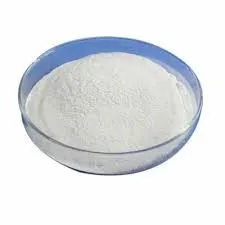
Там . 26, 2024 06:35 Back to list
Applications and Benefits of Hydroxypropyl Methylcellulose in Various Industries
The Versatile Applications of Hydroxypropyl Methylcellulose
Hydroxypropyl methylcellulose (HPMC) is a widely used polymer derived from cellulose, a natural polymer obtained from plant cell walls. This compound has gained popularity across various industries due to its unique chemical properties and versatility. Its applications span food, pharmaceuticals, cosmetics, and construction, making it an essential ingredient in many products we encounter daily.
The Versatile Applications of Hydroxypropyl Methylcellulose
In the realm of pharmaceuticals, HPMC is valued for its role as a binder in tablet production and as a controlled-release agent. It assists in the formulation of sustained-release medications, allowing for a gradual and controlled release of active ingredients over time. This effectiveness in drug delivery systems enhances patient compliance, as it reduces the frequency of dosing. Additionally, HPMC is used in ophthalmic solutions as a lubricant, providing relief for dry eyes. Its biocompatibility further supports its use in various medicinal applications.
hydroxypropyl methylcellulose use

The cosmetic industry also benefits significantly from HPMC, where it is incorporated into products such as creams, lotions, and hair care formulations. Its ability to form a film and retain moisture makes it an ideal ingredient in moisturizing skin and hair products. HPMC contributes to the smooth texture and stability of cosmetic formulations, ensuring a pleasant application experience for consumers. Furthermore, it acts as a crucial thickening agent, allowing manufacturers to create products that deliver the desired consistency and viscosity.
HPMC's role extends to the construction industry, where it is used in cement and gypsum-based products. As a thickener and water-retaining agent, it improves the workability of mortar and plaster, making it easier for construction workers to apply these materials. This property is particularly beneficial in façade applications and tile adhesive formulations, as it enhances adhesion and reduces cracking during the curing process.
In addition to these applications, HPMC is appreciated for its environmentally friendly attributes. As a plant-based polymer, it is non-toxic and biodegradable, making it a sustainable choice for various industries. Its wide-ranging applications, coupled with its safety profile, make HPMC a favorable ingredient in an era where eco-friendliness is paramount.
In conclusion, hydroxypropyl methylcellulose is a remarkable compound with a plethora of applications across multiple sectors. Its versatility as a thickening agent, binder, and emulsifier makes it invaluable in food, pharmaceuticals, cosmetics, and construction. As industries strive for innovation and sustainability, HPMC's role is set to grow, providing solutions that meet consumer demands while being conscious of environmental impacts. Whether found in our food, medications, or personal care products, hydroxypropyl methylcellulose continues to enhance our daily lives in myriad ways.
-
Why HPMC is a Key Additive in Wall Putty Formulations
NewsAug.05,2025
-
Redispersible Powder in Decorative Renders: Function Meets Finish
NewsAug.05,2025
-
Redispersible Powder for Interior Wall Putty: Smooth Results Every Time
NewsAug.05,2025
-
HPMC’s Water Retention Capacity in Dry Mortar Applications
NewsAug.05,2025
-
HPMC Factory Contributions to Liquid Detergents
NewsAug.05,2025
-
How HPMC Factory Products Change Detergent Textures
NewsAug.05,2025







